This article is one of many from our Aoudad Prep Series
The Low-Down on Judging Barbary (Aoudad) Rams
It ain’t easy. Many guides have seen more high-caliber rams and have more experience in the field than me, but they still have difficulty separating rams in the 30″-34″+ range. Like mountain goat billies, this is exacerbated if a ram is solo or with a group only consisting of females. Hence, this article is focused on categorizing rams with a high level of confidence into groups of 27″+ (a trophy ram), 30″+ (an outstanding ram) and 32″+ (world-class, once-in-a-lifetime). I go through the three ways I analyze a ram: 1) Cape/Chaps/Face/Bases, 2) Profile length and horn weight distribution, 3) Curvature and tips. I will also touch on some general differences between rams harvested in New Mexico versus West Texas. All of our barbary sheep hunts are done in Texas
The Front End – Cape, Chaps, Face, and Bases
The ram on the left is 33″ and 6/8ths, the other ram is right at 30″. Both are fantastic Barbary Sheep.
Both these rams exhibit the front-end-view features typical of 30″+ rams.
First, the animals have large horn bases that appear to touch in Picture A. From this close up shot you can see hide between the horns, but from a distance that sliver will disappear. With high-end optics you might be able to see that the larger ram has even larger bases and less hide buffer between. This relative difference is a good example of slight differences that can be used to guess that the larger ram is in the 32″+ category. Picture B, below, is the same rams with the capes removed (they are inverse, bigger ram on right now). In this picture you can see more clearly that the right-hand ram has closer/larger bases, but the difference is still minute.
The closeness of bases is suggested a lot as a judging mechanism. It is useful but not foolproof. 27″+ rams will always have minimal gap between the horns when viewed through optics, but smaller rams can also appear to have minimal gap (See Picture C). This metric is best used when doing relative comparison of two trophy rams.
This metric can also get convoluted if you are use to hunting NM versus TX. Generally, TX rams have a “scaly” or scarred patch between the horns while NM have clean hide. This difference makes the patch appear wider on NM rams. Picture A is a good example of typical TX rams.
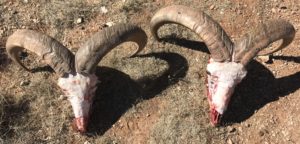
Picture B
The more telling metric on both of these rams is that the mass of the horns does not dissipate until the horn starts to curve downward. In big horn sheep terms, “the weight carries through the first two quarters”. Rams that don’t have this characteristic are typically less than 30″. 27″-29″ rams show some level of mass loss before the downward turn of the horn (Picture C).
Second, look at the actual facial structure of these two rams (Picture A). They both have a broad nose and that “ugly ram” look. Both rams have scarring on the bridge of their noses. Although this seems like a vague variable, it is a true prerequisite for all rams above 27-28″+ and 7-8+ years old. The ram below (Picture C) is a 25-26″ animal. You can see the “feminine” facial structure common of these sheep before they hit higher trophy caliber. He is already starting to develop some scaring across his nose. Take note of the previous concept here also; this ram starts to lose some mass in it’s second quarter.
The last front-end concept I will touch on is the chaps. This is another concept that isn’t foolproof. However, almost all 30″+ rams will have what I call a “full skirt”. Looking at Picture D you will see that the “beard” of the ram is long enough that you don’t see any sharp transition to the “chaps”. On ewes and younger rams there is usually a gap or well defined thinning/shortening right below the point of the shoulder. You can see this to some extent on the ewe in Picture D. Ewes’ beards are shorter than young rams’ beards, so the transition on a younger ram is even more pronounced. As a side note, the black streak below the ram’s ear in Picture D is the sure mark of a ram. Ewes do not have this patch. Almost all rams in NM have this coloring, while only 70-80% have it in TX. If you are looking at a bachelor group of 6-7 year old rams, this patch can quickly tell you that you are looking at rams.
The Profile Look
In Picture E, the bedded and quartering away ram on the left is a 30″ ram. The ram standing in the foreground is a 25-26″ ram. First, the big ram has a lot more length. On big Texas rams the horn will usually go beyond the top point of the shoulder. Sometimes they will have hide wear on the shoulder. You can see the big ram is beyond this point, while the small ram is 2-3″ short of the point of the shoulder. Next, look at the mass distribution. The large ram loses little weight throughout the first half of the horn. The smaller ram loses significant mass past the first quarter.
Horn Curvature
Horn curvature varies quite a bit even within a small area. However, a good generalization is that NM rams drop down more than they swoop back, so the overall curve of the horn is more telling. An experienced NM taxidermist told me he believes the best metric for judging a 30″+ NM ram is, “Can you throw a basketball between his face and the horn?”. Both the rams in Picture F would fit this description. They are both monster rams.
A swooping-back Texas ram might hit the mark with throwing an over-sized soccer ball through. The below ram (Picture G) is a 33″+ ram with a lot more swoop to the rear than the Picture F rams.
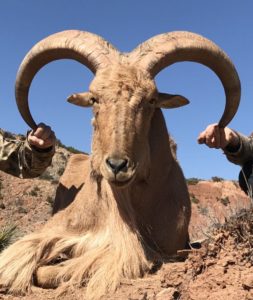
Picture G
Picture H shows a 25-26″ ram that reflects a smaller opening in the horns. This ram drops, with less rearward swoop than the Picture G ram, so it’s easy to think there isn’t as big of a difference in the two than there actually is.
The last thing to look at is the tips of the horns. I have found this metric to be as good as any for qualifying 30″+ rams. It is rare to find a 30″+ ram that does not have this tip structure. Picture F and Picture I (ram’s left horn in particular) are an awesome depiction of tip curvature in slammer rams. The tips are close to parallel with the ground.
The rams in Picture F almost appear to have tips that are starting to turn skyward. That is a great sign. If you compare to the ram in Picture H, you can see his tips are still going slightly downward. The reason this metric is so solid for distinguishing big rams is due to the mechanics of horn growth. Growth occurs from the base. As the ram reaches the ages of 11+, the base growth “pushes the tips around the corner”. This effect is apparent if the horn swoops back or drops hard.
I’ll end things with one small caution. Like mulies and whitetail, aoudad always look about 2x as big when running away. Don’t ever make a shot decision solely based on the “hauling ass” view.
All the above images can be clicked on to see larger versions. I thank Wenner Wildlife Studio for allowing me to use some of their awesome taxidermy shots to explain a couple of the concepts.


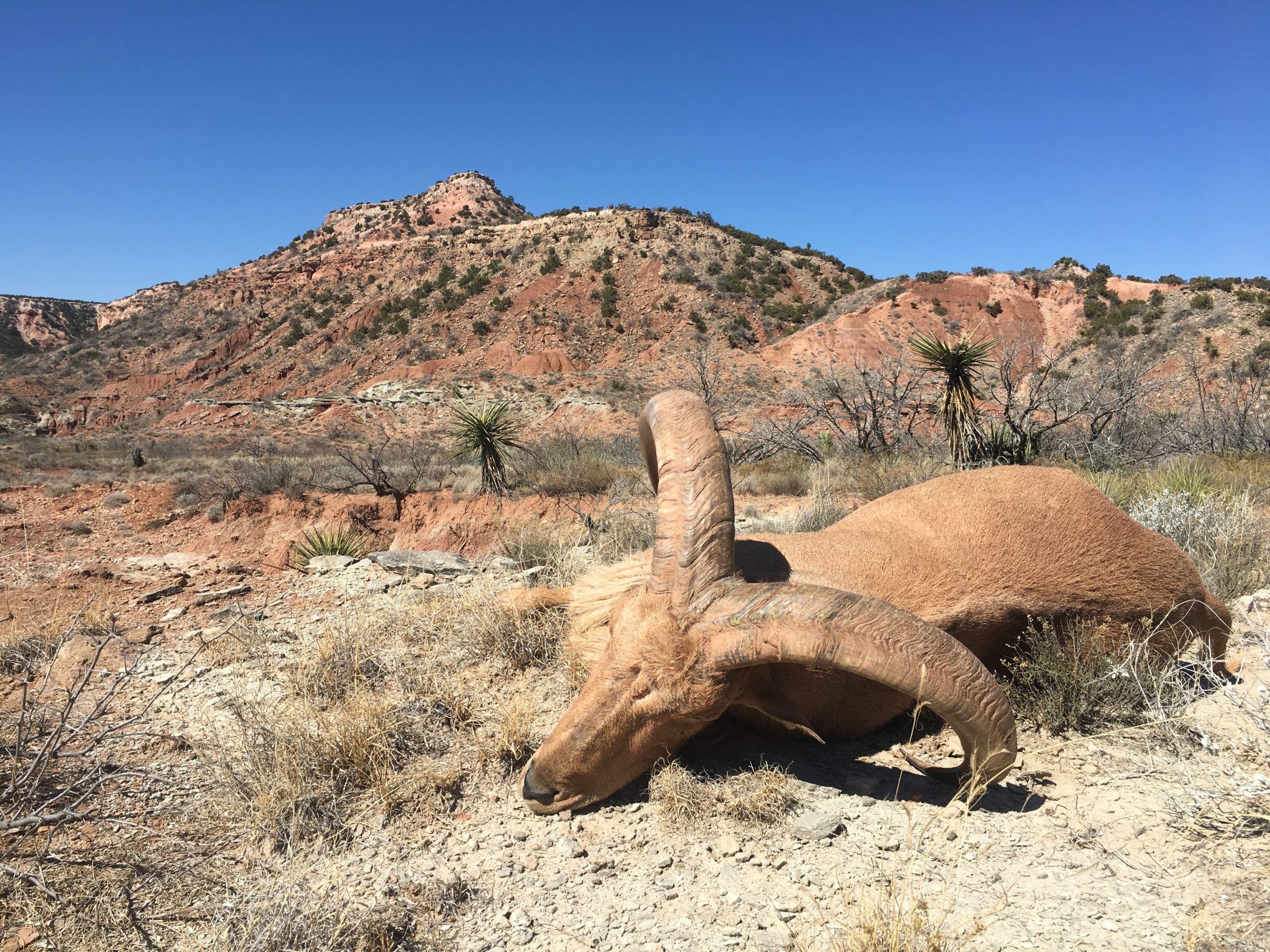
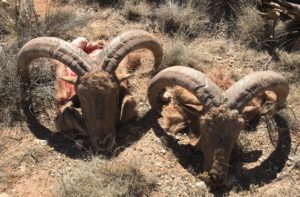
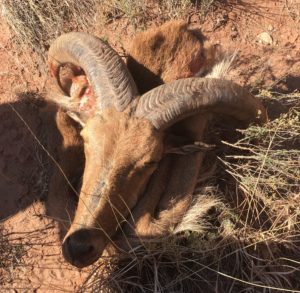
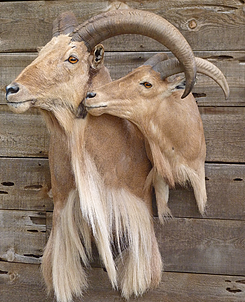
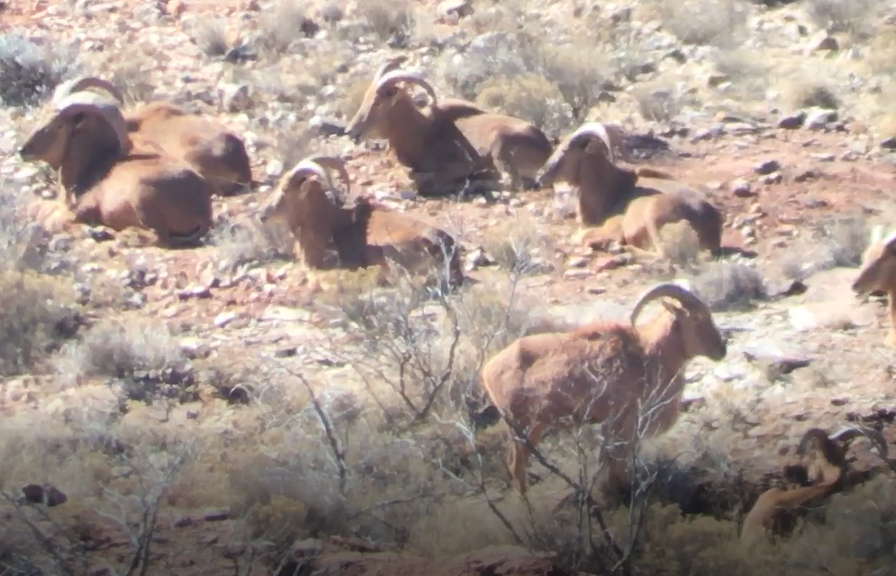
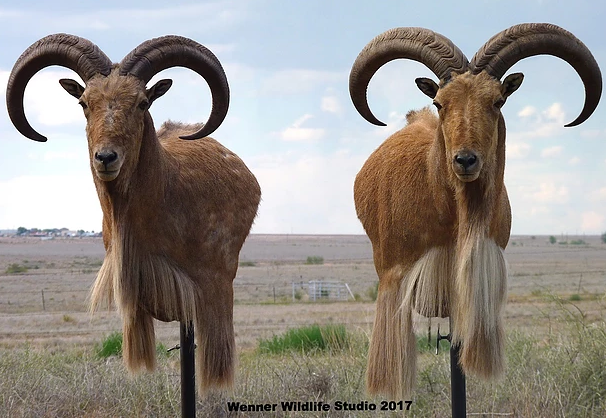
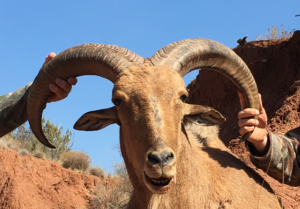
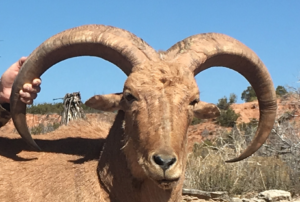
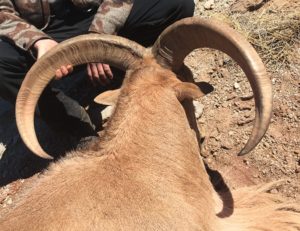
Hi Cliff, thanks for the article. I’m heading for my first hunt in April. I have a question. In the pic entitled “F,” which company did the form come from?
Thanks for the feedback. Those mounts are from Wenner Wildlife Studio in NM. He does good work.
Good luck on your hunt!
Cliff
I don’t know where the actual form for that pose came from but it is becoming a common pose for aoudad mounts. My personal ones are done that way. I bet the guys at Wenner Wildlife Studio would let you know.
Thanks,
Cliff
Hi Cliff,
What Aoudad outfitters do you recommend in New Mexico?
Hi Chris,
Unfortunately, I don’t know any of the folks outfitting in NM… I’m much more familiar with TX. Wish we could be more help.
Thanks,
Cliff